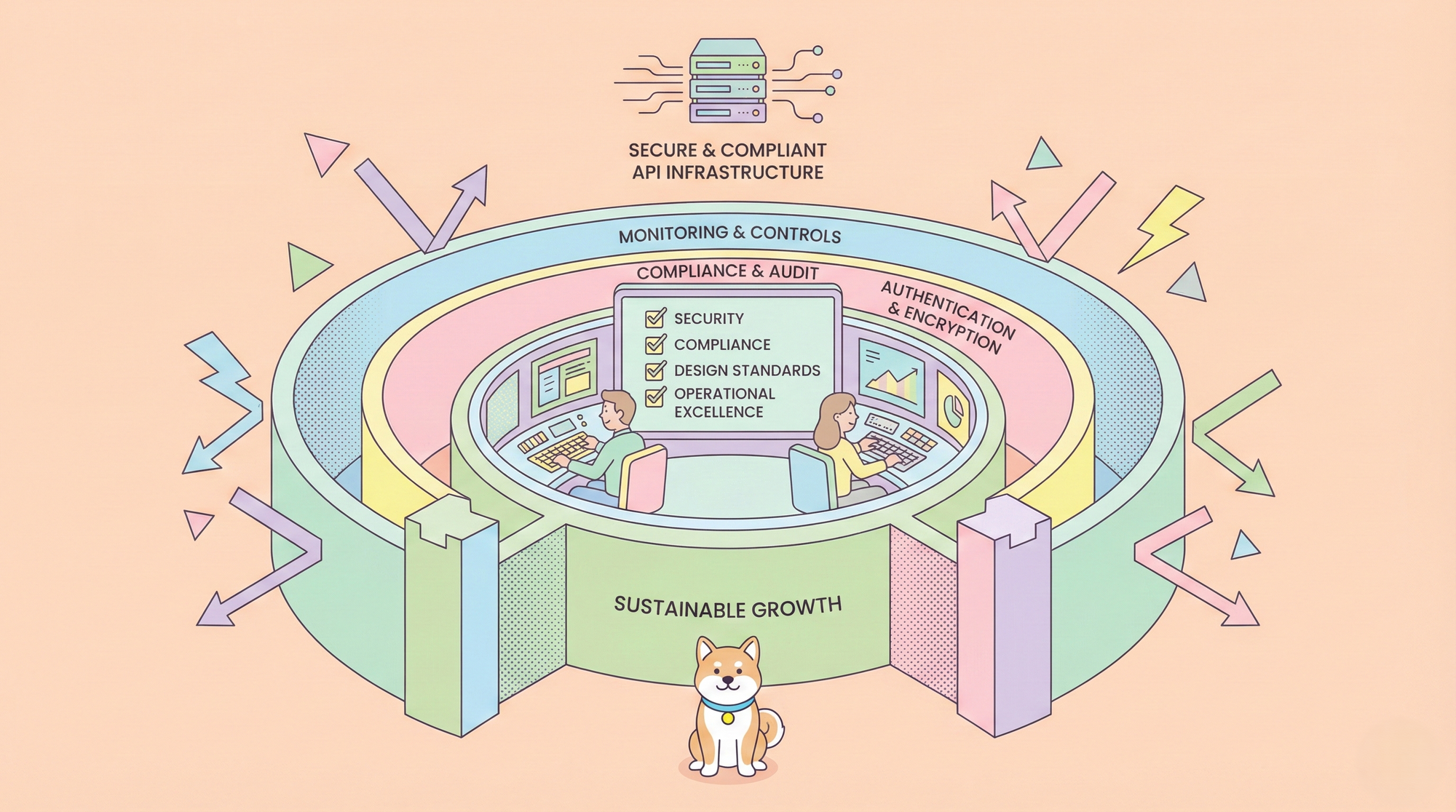Cursor, THE AI Coding, stands out by integrating artificial intelligence directly into the development process. One of its most addictive features is Cursor Tab, an advanced autocompletion system designed to go far beyond simple code snippets. With Cursor Tab completion feature, it acts like an AI pair programmer sitting right beside you, suggesting intelligent, multi-line edits and context-aware completions directly within the editor.
Think of Cursor Tab not just as autocompletion, but as assisted code generation and refactoring. Unlike traditional tools or even GitHub Copilot, which primarily insert text at your cursor, Cursor Tab can understand the surrounding code, your recent actions, and even linter errors to propose meaningful changes, including modifications and deletions across multiple lines.
This tutorial will guide you through understanding, using, and mastering Cursor Tab, transforming it from a neat feature into an indispensable part of your coding arsenal. We'll cover everything from basic usage and core concepts to advanced techniques and customization.
Want an integrated, All-in-One platform for your Developer Team to work together with maximum productivity?
Apidog delivers all your demands, and replaces Postman at a much more affordable price!
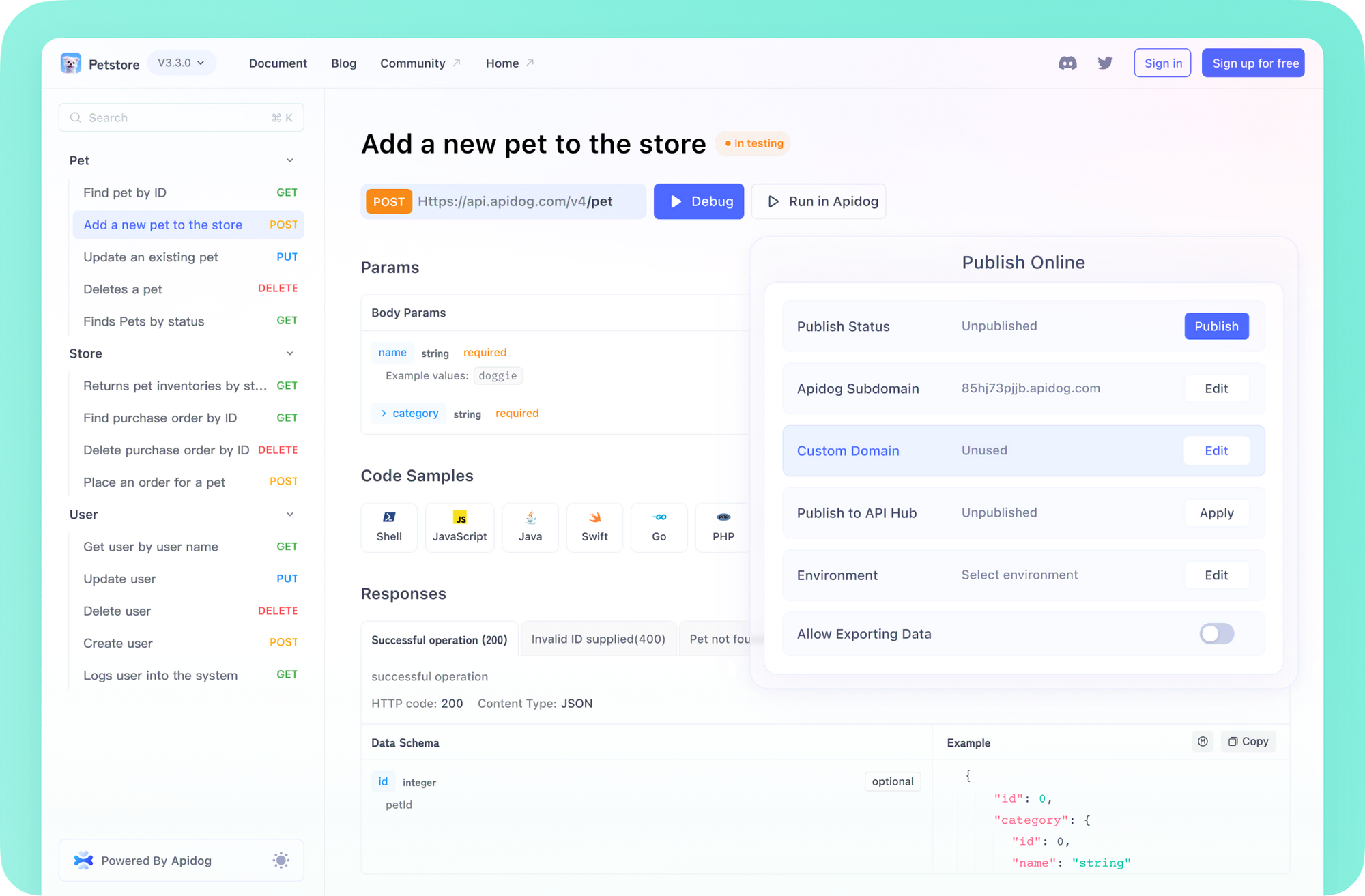
Cusor Tab Completion vs GitHub Copilot, What is the Difference?

Before diving into the "how," let's understand the "what" and "why." Cursor Tab distinguishes itself in several key ways:
The most significant difference is its ability to edit existing code, not just insert new code. If you're refactoring a function, fixing a bug, or adding a parameter, Tab can suggest changes that modify the lines around your cursor. GitHub Copilot, in contrast, primarily focuses on inserting code at the current cursor position.
Tab doesn't shy away from complex changes. It can suggest modifications spanning multiple lines simultaneously, presenting them as a clear diff. This is incredibly useful for tasks like completing code blocks, implementing interfaces, or refactoring logic.
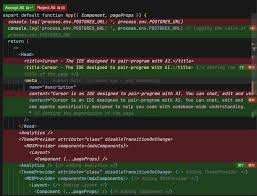
Contextual Awareness: Powered by a custom AI model, Cursor Tab maintains a history of your recent changes within its context window. This allows it to understand your immediate goals and ongoing tasks. It also considers linter errors, often suggesting fixes for issues highlighted by your code analysis tools.
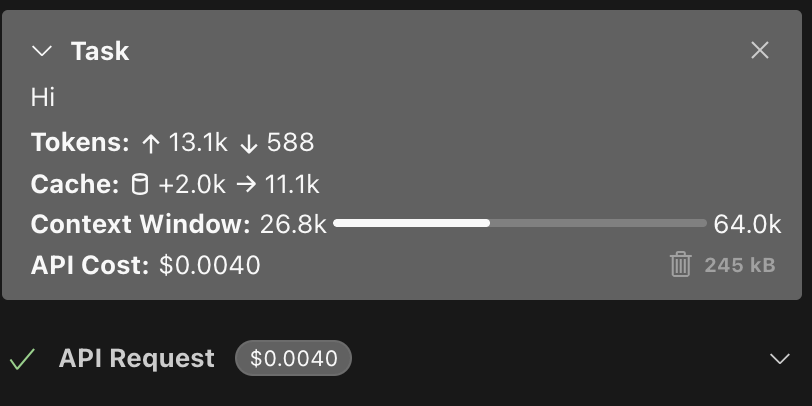
Diff-Based UI: When Tab suggests modifications to existing code (not just additions), it presents the change as a diff pop-up next to your current line. This visual representation makes it immediately clear what parts of your code will be added, removed, or changed, allowing for quick and confident acceptance or rejection. Simple insertions appear as familiar grey ghost text.
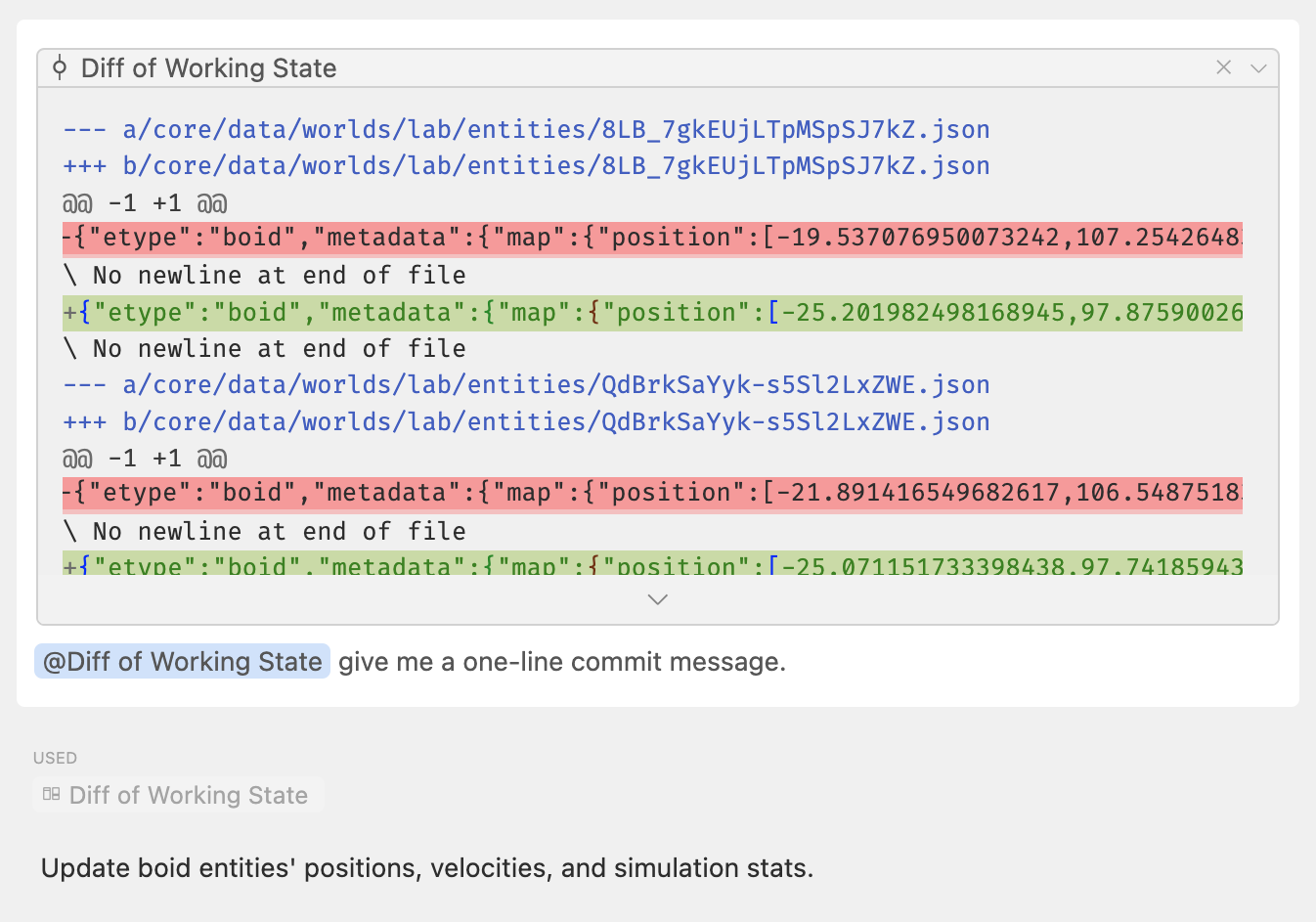
Instruction-Following (Implicit): Because it understands context and recent edits, Tab can often infer your intent and make suggestions that align with it, effectively acting on implicit instructions derived from your coding patterns.
Getting Started with Cursor Tab Completion Feature
Using Cursor Tab completion is designed to be intuitive, integrating seamlessly into your natural coding flow.
Cursor Tab is a native feature of the Cursor editor. If you have Cursor installed, Tab is available out-of-the-box. Free users get a generous allocation of suggestions (2000 at the time of writing), while Pro and Business plans offer unlimited usage.
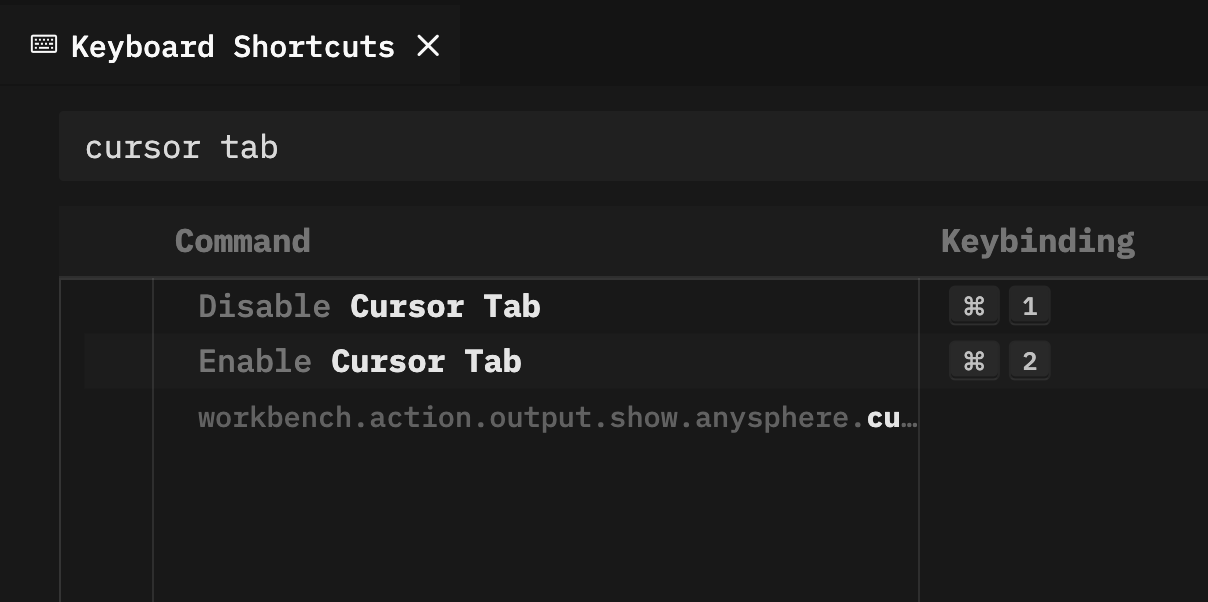
You can easily toggle Cursor Tab on or off. Simply locate the "Cursor Tab" indicator in the status bar at the bottom-right of the editor window. Hovering over it reveals options to enable or disable the feature. This is useful if you temporarily want to rely solely on standard editor completions or if you find it intrusive in specific scenarios (like writing prose).

Basic Interaction:
Interacting with suggestions is straightforward:
- Accept: Press the
Tabkey to accept the entire suggestion (both insertions and diff-based edits). - Reject: Press
Escto dismiss the suggestion. Alternatively, simply keep typing; your input will override the suggestion . - Partial Accept (Word-by-Word): Need only the next part of a suggestion? Press
Ctrl →(on Windows/Linux) or⌘ →(on macOS). This accepts the suggestion one word at a time, giving you fine-grained control. Note: You might need to enable this feature in settings (Cursor Settings>Features>Cursor Tab).
How Suggestions are Triggered:
Cursor attempts to generate a suggestion with every keystroke or cursor movement. However, it won't always show one. If the AI model predicts that no change is needed or appropriate at that moment, no suggestion will appear. This prevents unnecessary visual noise. Suggestions can affect the code from one line above to two lines below your current cursor position
Example Scenario:
Imagine you're typing a function call:
result = calculate_total(subtotal, tax_rate, dis
As you pause after typing dis, Cursor Tab might suggest completing the parameter name and adding the closing parenthesis:
# Suggestion shown as grey text
result = calculate_total(subtotal, tax_rate, discount)
Pressing Tab accepts this.
Now, consider adding a new feature flag check:
// Cursor is here
if (user.isAdmin) {
enableAdminFeatures();
}
You type else if (, and Cursor Tab might suggest a common pattern, potentially modifying multiple lines:
+ else if (featureFlags.isNewUiEnabled(user.id)) {
+ renderNewUi();
+ } else {
+ renderOldUi();
+ }
-
- if (user.isAdmin) {
- enableAdminFeatures();
- }
This would appear as a diff pop-up. Pressing Tab applies this multi-line change.
More Advaces Feautres of Cursor Tab Completion
Understanding the basics is crucial, but the true power of Cursor Tab lies in its advanced capabilities.
1. Multi-Line Edits and Refactoring in Cursor
This is Tab's superpower. Instead of manually adding parameters, updating function signatures, and modifying call sites, Tab can often suggest the entire change.
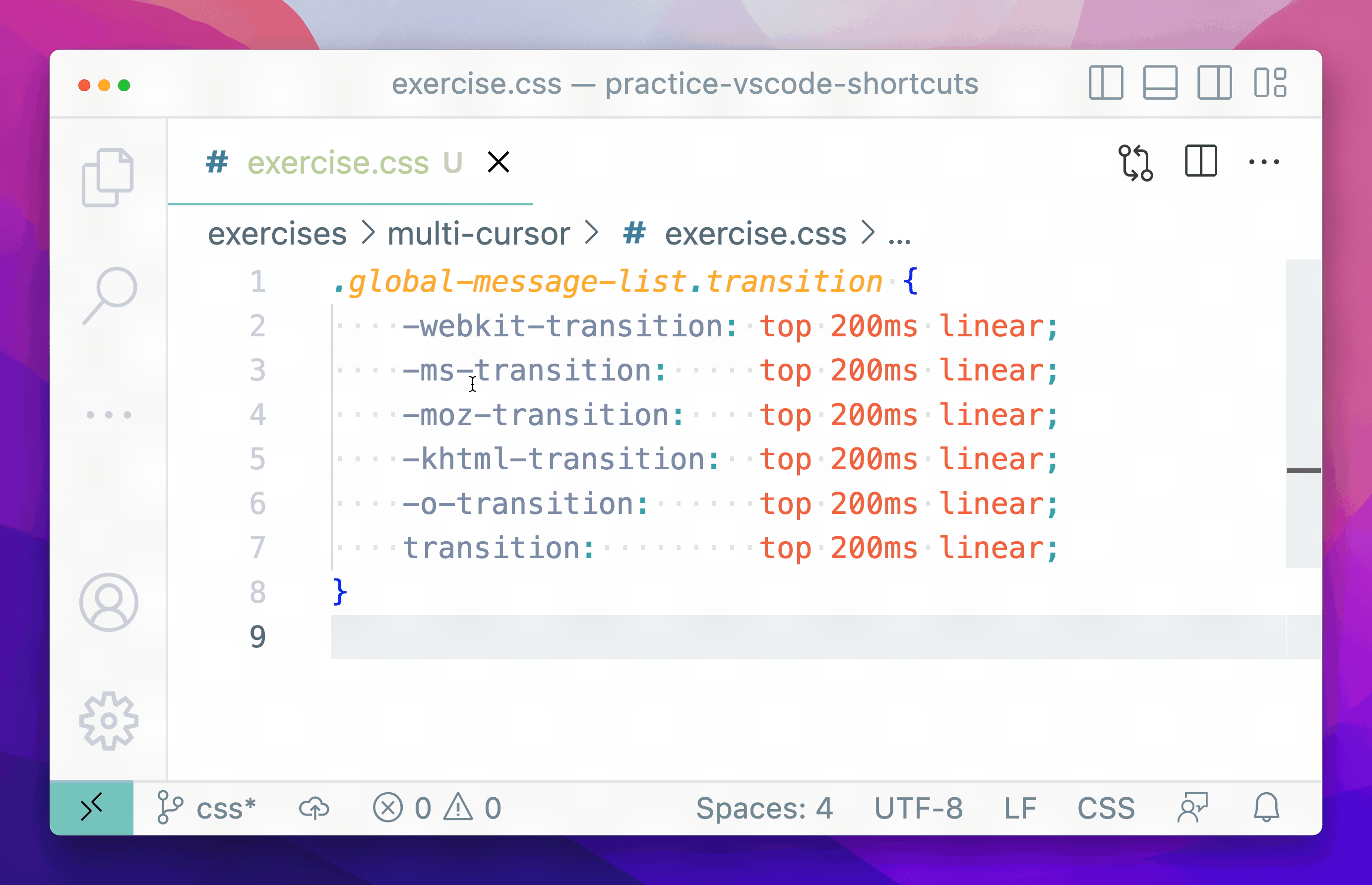
Scenario: You have a function process_data(data) and realize it needs a configuration object.
Action: You start modifying the function signature: def process_data(data, config
Tab Suggestion: Tab might propose completing the parameter, adding type hints (if applicable in your language), and even suggesting modifications within the function body to utilize config. It might look like this (simplified):
- def process_data(data):
+ def process_data(data, config):
# ... existing code ...
- threshold = 0.5 # Old hardcoded value
+ threshold = config.get_threshold() # Use new config
if data_value > threshold:
# ... more code ...
2. Contextual Awareness & Linter Integration:
Tab remembers what you've just done. If you've just defined a variable, it's more likely to suggest using it. If your linter flags an unused import or a typo, Tab might propose the fix directly.
Scenario: You write const userNmae = "Alice"; and your linter underlines userNmae.
Action: You place your cursor near the typo.
Tab Suggestion: Tab might show a diff suggesting the correction:
- const userNmae = "Alice";
+ const userName = "Alice";
Scenario: You're implementing items in a list following a pattern.
Action: You've added Item(name="A", value=1), and Item(name="B", value=2),. You start the next line.
Tab Suggestion: Recognizing the pattern, Tab might suggest Item(name="C", value=3),.
Github Copilot User? Here's What You Need to Know:

Cursor includes GitHub Copilot functionality by default. If you have both the standalone Copilot extension and Cursor's integrated features active, Cursor Tab's suggestions will take precedence. If you prefer to use the standard Copilot suggestions occasionally, you can disable Cursor Tab via the status bar or settings . Generally, users find Tab's ability to edit and its deeper contextual understanding provide a more powerful experience.
Advanced Tips to Use Cursor Tab Completion Feature
Once comfortable with the basics, explore these advanced features to further boost your speed and efficiency.
Tab in Peek Views (Go to Definition/Type Definition):
This is incredibly useful for API changes. When you use "Go to Definition" (often F12) or "Go to Type Definition," the definition appears in a "peek" window within your current file. Cursor Tab works inside these peek views too!

- Scenario: You're adding a new optional parameter
priorityto a function call:submit_task(task_data, user_id, priority=1) - Action: You realize
submit_taskdoesn't accept this. You use "Go to Definition" onsubmit_task. The function definition appears in a peek view. - Tab in Peek: Inside the peek view, you start adding the parameter to the definition:
def submit_task(data, user, prio - Tab Suggestion: Tab suggests completing the parameter in the definition, perhaps adding a default value:
def submit_task(data, user, priority=None): - Benefit: You can modify the function definition and then fix its usages more rapidly, sometimes without leaving your original file context [3].
Cursor Prediction (Next Edit Location):

Sometimes, after accepting a Tab suggestion, Cursor predicts where your next logical edit might be. If it has a high-confidence prediction and a relevant suggestion for that next location, pressing Tab again might jump your cursor there and apply the next suggestion.
- Scenario: You've just added a parameter to a function definition using Tab in a peek view.
- Action: You accept the suggestion and close the peek view.
- Prediction: Cursor might highlight the original call site where you started. Pressing
Tabagain could potentially accept a suggestion to use the new parameter you just added at that call site. - Benefit: This "tab-tab-tab" flow allows you to chain related edits together very quickly, especially during refactoring [3]. Keep an eye out for visual cues indicating a predicted next location.
Partial Accepts (Word-by-Word):
As mentioned earlier (Ctrl/⌘ →), this is perfect when Tab offers a longer suggestion, but you only need the first part, or want to slightly modify the tail end.
To enable partial accepts, navigate to Cursor Settings > Features > Cursor Tab.
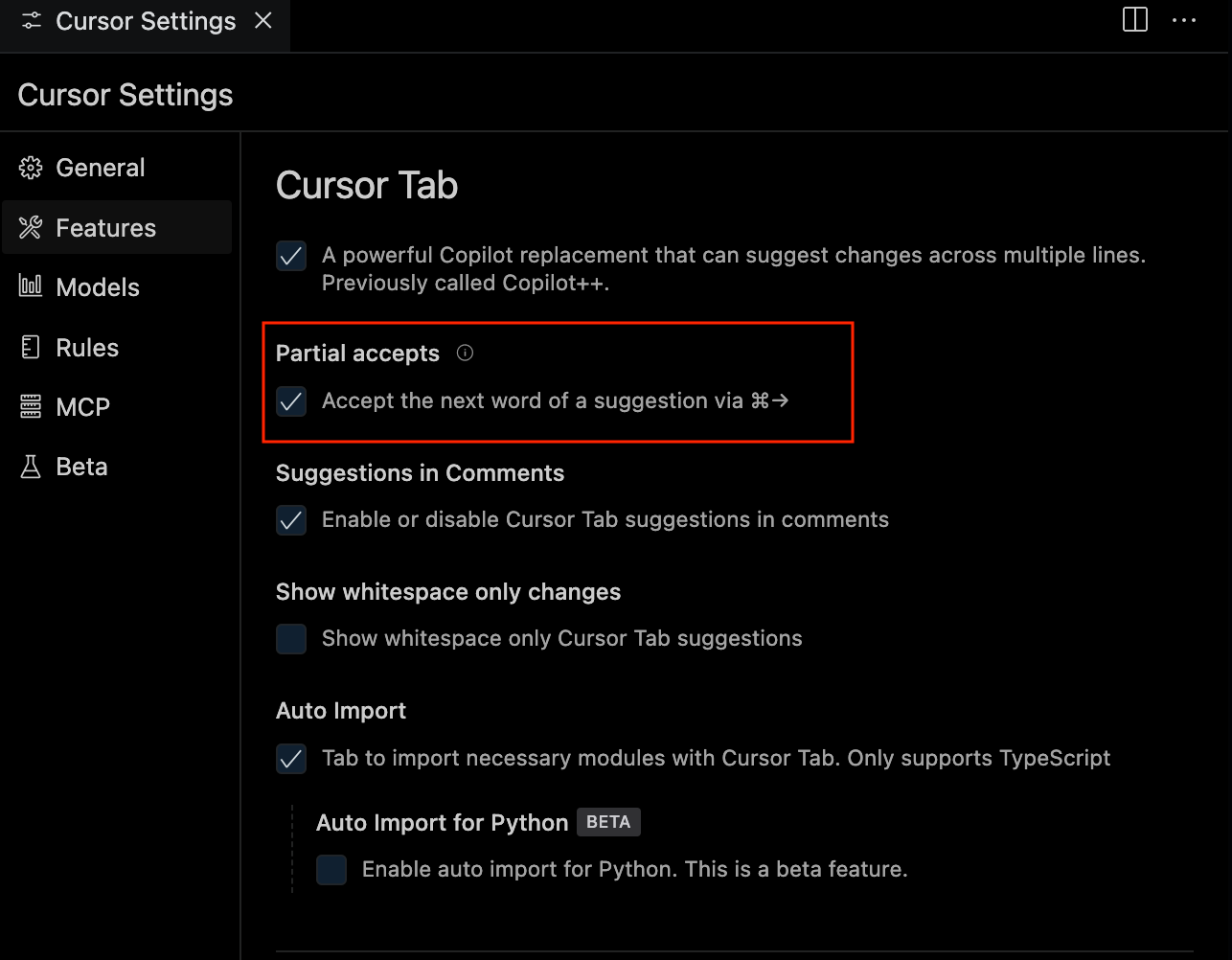
- Scenario: Tab suggests
const user = await fetchUserData(userId);. - Action: You only want
const user =. - Partial Accept: Press
Ctrl/⌘ →three times to accept "const", "user", and "=". Then you can type something different, likegetUserFromCache(userId);.
Enjoy Tab, Tab, Tab? Here're Some Additional Tips for Vibe Coding with Cursor
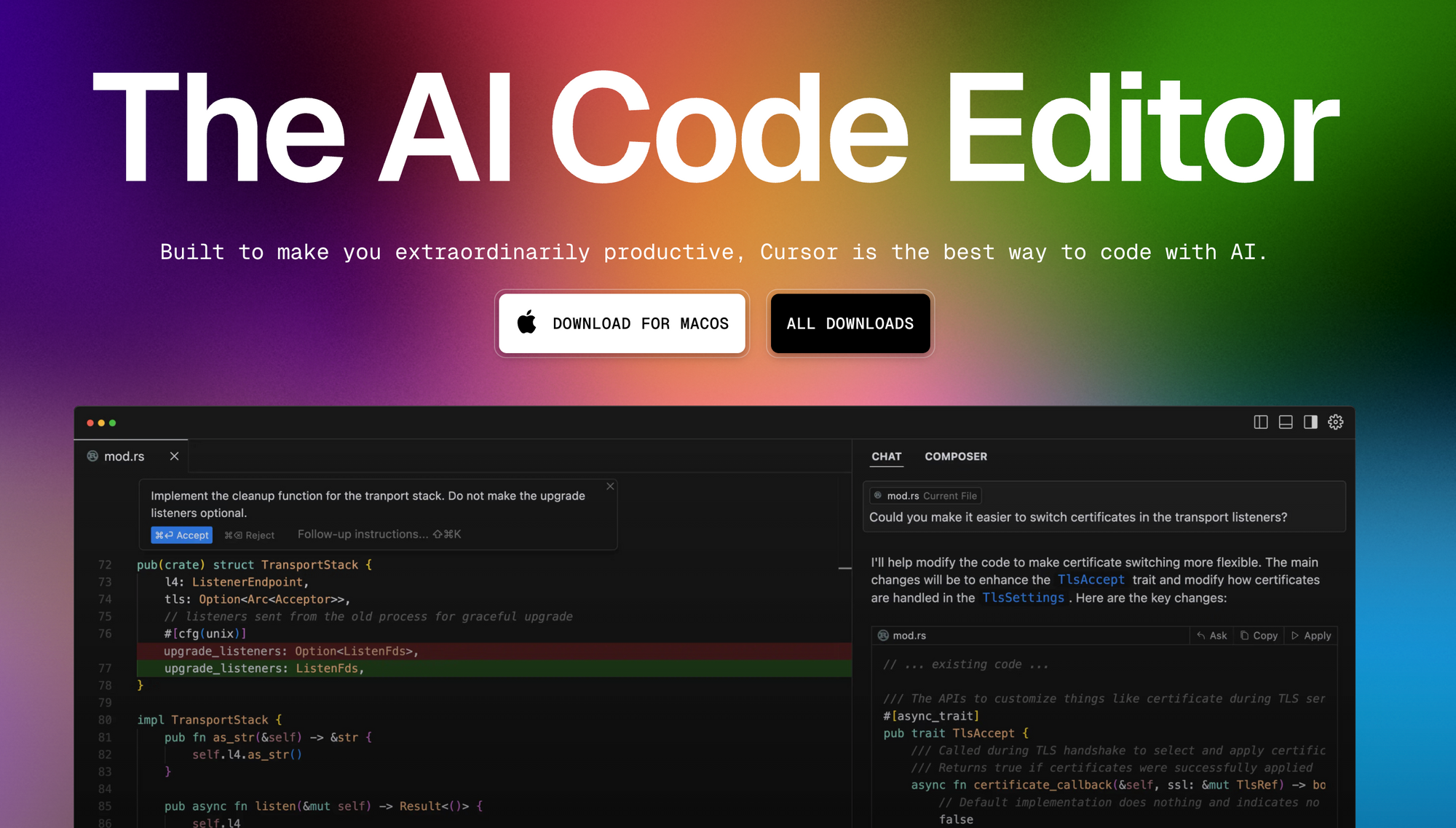
- Trust but Verify: AI is powerful, but not infallible. Always review Tab suggestions, especially complex ones involving multiple lines or logic changes, before accepting. The diff view helps immensely here.
- Learn the Shortcuts: Mastering
Tab(accept),Esc(reject), andCtrl/⌘ →(partial accept) is key to fluidity. - Experiment: Try Tab in different situations – writing new code, refactoring existing functions, fixing bugs, working with unfamiliar APIs. Its usefulness can vary depending on the context.
- Combine with Other Features: Use Tab alongside Cursor's Chat (
Cmd/Ctrl+L) and inline edits (Cmd/Ctrl+K) for a comprehensive AI-assisted workflow. Tab excels at local, immediate suggestions, while Chat and inline edits handle larger or more complex instructions. - Leverage Auto-Import: Cursor also features an auto-import capability (though not detailed in the provided links). Tab suggestions that introduce dependencies often work seamlessly with this, automatically adding necessary import statements, further reducing boilerplate.
Cursor Tab is more than just an autocomplete; it's a glimpse into the future of software development where AI actively collaborates with developers. By understanding its capabilities – multi-line edits, contextual awareness, diff previews, and advanced features like peek view integration and prediction – you can significantly accelerate your coding process, reduce errors, and spend more time on creative problem-solving. Embrace Cursor Tab, integrate it into your daily workflow, and experience the productivity boost of having an intelligent pair programmer embedded directly in your editor.
Want an integrated, All-in-One platform for your Developer Team to work together with maximum productivity?
Apidog delivers all your demands, and replaces Postman at a much more affordable price!

